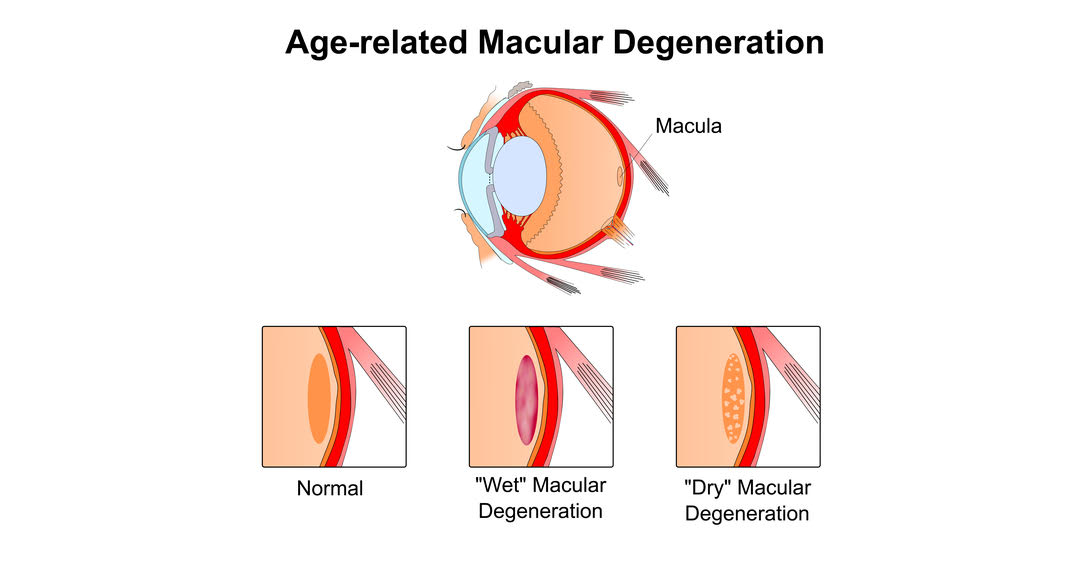Age-Related Macular Degeneration (AMD) is the leading cause of blindness in seniors. The disease harms central vision and limits a person’s ability to read, write and recognize faces. Older Americans who are unaware of the disease may be putting themselves at risk. The good news is that they can protect their sight with routine eye exams and some lifestyle changes. New treatments and protective steps can help people with AMD avoid vision loss. Here are some facts we think you should know:
§ The early warning signs of macular degeneration are subtle and easy to miss
In the earliest stages of AMD, you may not notice any changes to your eyes or vision. But at the same time, an early diagnosis allows for timely treatment. So how can you be sure to catch the disease early without obvious symptoms? The best defense is to get a comprehensive eye exam, even if you don't need glasses or contacts. The American Academy of Ophthalmology urges adults with no symptoms to have an eye exam at least by age 40. After age 65, it's important to get an exam every one to two years. But don't wait until age 40 if you notice problems with your eyesight or have eye discomfort.
§ Family history shapes your risk of macular degeneration
If you have a close family member with AMD, you have a greater risk of getting the disease. Before your next eye exam, speak with your family about their eye health history. Catching AMD early could better your chances of saving your sight.
§ You can't reverse vision loss from macular degeneration, but you can save your remaining vision
Fifteen years ago, there was little that we could do to stop AMD from stealing people's vision. The most advanced form of disease, called "wet" AMD because it causes fluid to leak from blood vessels in the eye, often caused blindness. Thanks to major advances in treatment, such as the use of anti-VEGF drugs, fewer people are going blind.
§ Vitamins can slow macular degeneration (in some cases)
If you have AMD, you may have heard that the AREDS 2 vitamin formula can help slow the disease. Clinical trials show that these vitamins for AMD can help with intermediate or advanced AMD in one eye. Trials have not shown that they prevent AMD in people who do not have the disease.
§ Smoking increases your risk of age-related macular degeneration
Many studies have found that smoking cigarettes can increase risk of AMD. Smoking also increases the speed at which the disease worsens. If you smoke, you are twice as likely to get AMD compared with a nonsmoker. The good news is that stopping smoking is the best action you can take to lower your risk of AMD. People who quit smoking 20 years ago have the same risk of AMD as people who have never smoked.
§ Daily vision checking at home is effective at monitoring AMD progression
The Amsler grid is a simple chart that people with dry AMD can use at home to check for changes. All you have to do is look at it once every day! Learn how to use the Amsler grid to track progression and risk of AMD-related vision loss.
§ Eating certain foods may cut your risk of macular degeneration
Studies have shown that foods rich in omega-3 fatty acids are good for eye health. Studies link eating these foods with a reduced risk of AMD-but not when taken as supplements. Other nutrients that help eye health include lutein, zeaxanthin, zinc and vitamin C.
§ Exercise can help protect your vision as you age
Many studies show getting regular exercise can benefit your eyes. One study found that exercising three times a
week reduced the risk of getting wet AMD by 70%. Studies also show that exercise reduces the risk of all stages of AMD.
If you
or someone you know has not had recent eye exam please schedule one at The Eye
Clinic of Texas at 800-423-3937, visit The Eye Clinic of Texas, or Facebook.



